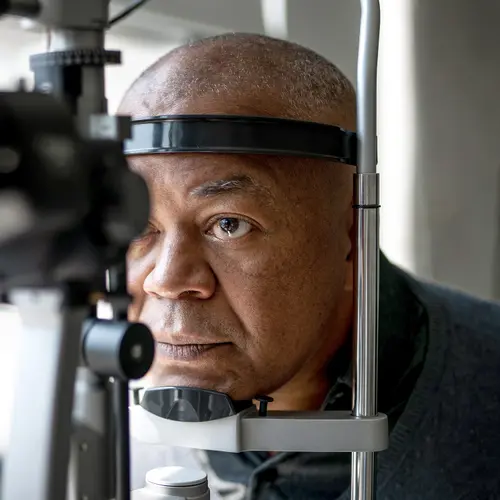If you have age-related macular degeneration (AMD), you most likely find it much harder to see things in poor light. This is a natural occurrence as we get older: By age 60, you need three times as much light as at age 20. But if you have a condition such as AMD that affects vision, this number can double. The result? A 60-year-old with AMD needs about six times as much light as a 20-year-old with crystal-clear vision.
The right lighting can work wonders when it comes to your ability to move about your house and do daily activities. Here are some ways to light up your home.
Let there be light. It’s important to make sure areas where you spend a lot of time, like your kitchen or office, are well lit. It’s important to have several lights in a room rather than one bright light. This way, you can evenly spread the light so that there are no dark areas. To do this, you can:
- Install under-cabinet lighting in these spaces to help you see tasks better.
- Place extra lighting in hard-to-navigate spots like hallways, bathrooms, and stairs.
- Make sure switch plates are lighted, or contrast with the wall color, so that you can easily see them.
You may want to also install track lighting in areas like your kitchen and den. These are metal strips mounted to the ceiling that have light fixtures connected to them. You can install them above your chair where you read, over the stove, or over kitchen counters.
Track lighting comes in both a spotlight design that targets certain area and a flood light design that spreads the width of the light around the room. They work well with most décor styles and work well even in more formal parts of your house, like your dining room or living room.
Invest in targeted task lighting. You may think it will help to simply install brighter bulbs in overhead lights. But if you’re trying to read or do a task, the distance between the bulb and the material may be great enough that you can’t see as well as possible. Task lighting provides extra illumination so that you can see a specific area, such as a desk or kitchen counter. It’s usually brighter than regular lighting. It will help you do tasks like reading or meal prep without additional eye strain.
The best way to add task lighting is through lamps. They should be positioned below eye level so that they shine onto the task, not your eyes. Since the amount of light you need may vary, begin with the task light further away, and then move it closer to the object until you can see it clearly. (Each time you halve the distance between the two, you add four times more light onto the object.)
Since the bulb can put out heat, use a lamp that has a double shade. This way, you can keep the lamp closer to your face without risk of burns. It also helps to reduce glare.
Use natural daylight. It’s less likely to cause glare than artificial light. To make the most of it, open curtains wide or remove them completely. Install vertical blinds instead of horizonal ones, since they allow you to change the light direction in a room. If you use blinds, you can keep the area where the light comes in low and out of your eyes.
Wear blue-light-blocking glasses or polarized sunglasses. They help cut down the haze that surrounds bright objects and cut down on glare. You can buy them, or an optometrist can add blue-blocking tint or polarization filters to your existing glasses. But since this sort of tint may impair your vision, you may want to wear tinted blue-blocking “fit-over” sunglasses instead.
Pick the right bulbs. The five most common types of lightbulbs are:
- Halogen
- Fluorescent
- LED
- CFL
- Incandescent
Of all of these, halogen and LED lights are probably your best bets. For general overhead lighting, consider halogen lightbulbs. They provide strong, consistent light and provide excellent contrast between objects. They are also very energy efficient.
LED lights last for a while and do a good job of lighting up a specific area. They work best for task light lamps. Look for ones that have a Kelvin, or K rating, of about 4,500. This produces a white light that’s closest to true daylight. They also come as “smart bulbs,” which means that they can be connected to smart speakers like the Amazon Alexa. Some even change colors.
Incandescent lightbulbs mimic natural lighting but can cause glare. Fluorescent lights are very bright and can set off a sensitivity to light. CFLs aren’t recommended, since they can emit mercury and require special disposal methods.
Pay attention to the little extras. These are all small tweaks, but they can make an enormous difference in day-to-day life:
- Keep your lighting similar in as many rooms as possible, so you don’t have to adjust to different levels as you go from room to room.
- Using color and contrast on your light switches can help them stand out so you can more easily see them.
- Dimmer switches let you adjust how much light you have in a room.
- Painting walls in light matte colors helps to reflect light into each room.


